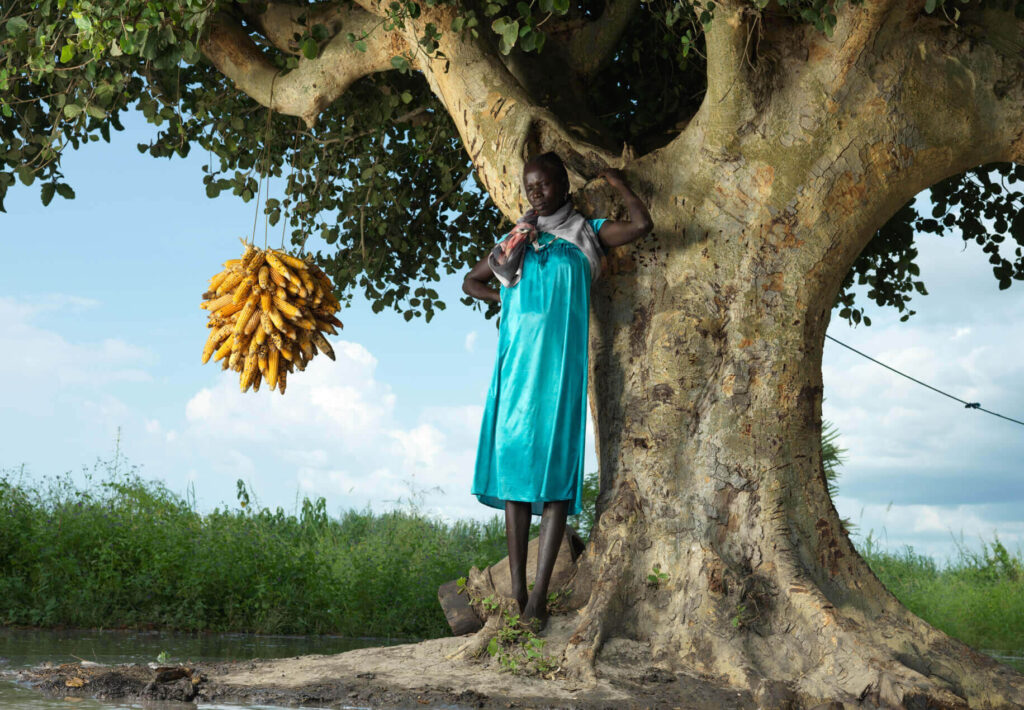Over the past 40 years, International Medical Corps has responded to the world’s most pressing disasters, providing medical care and supplies, clean water and nutrition, mental health, protection and other services to families affected by conflict, disaster and disease. And true to our founding principle, we focus on training communities to become their own first responders—whether it’s training healthcare workers in Ukraine to perform emergency and trauma care amid conflict, or equipping midwives in Central African Republic with the skills they need to better serve their communities.
2024 was no exception to this trend. It was a year marked by immense challenges, yet International Medical Corps continued to deliver lifesaving humanitarian relief at a moment’s notice. Our teams faced challenges head-on, overcoming complex logistical and geographical obstacles to directly provide critical aid to more than 14 million people.
For example, this year’s hurricane season was extremely destructive, displacing many thousands of families from their homes, destroying critical infrastructure and severely restricting access to basic services. In the aftermath of these natural disasters—including Typhoon Gaemi and Hurricanes Helene and Milton—our first responders leaped into action, distributing vital supplies in the Philippines and delivering healthcare to displaced communities in the United States and to remote villages in Morocco struggling to recover. One year after Storm Daniel caused catastrophic flooding in Libya, our teams in Derna remained dedicated to providing a range of services to affected communities.
Our Water, Sanitation, and Hygiene (WASH) teams continued to work hard to make clean water more accessible and to decrease the spread of infectious disease on a global scale, drilling boreholes, installing climate-resilient solarisation systems and leveraging the power of community health workers to achieve their goals.
To combat widespread hunger, our Nutrition teams worked tirelessly to ensure that families had enough to eat and learned about nutrition. The range of services provided by our Nutrition staff includes comprehensive, education-first programming, working creatively to treat and prevent child malnutrition, launching nutrition and breastfeeding campaigns and leading mother-to-mother support groups, as well as offering cash-based solutions so families can be in charge of their own well-being.
In conflict zones around the world, our mobile medical teams provided critical services to displaced communities affected by violence. Highlights of this work included providing safety and normalcy for children in Gaza, strengthening the healthcare system in Ukraine and setting up mobile medical units in Mali’s embattled Douentza region.
And as 2024 moved into 2025, wildfires broke out across Los Angeles County, spreading rapidly and forcing people to flee their homes and businesses, not knowing when they would return. But thanks to funding from donors like you, International Medical Corps was able to deploy an emergency response team within 24 hours of the outbreak on January 7. We have since coordinated with local authorities to assess and meet immediate and long-term needs, and have since provided medical care, mental health services, resources and supplies to hundreds of people in affected communities.
These 10 photographs, taken over the course of the last year, offer a small glimpse into the daily lives of our staff and the communities we serve. We hope that they leave you—our community of generous supporters—with renewed hope. Together, we can create a better, more resilient world where vulnerable people have access to healthcare, where mothers survive childbirth, where children are nourished and where families can thrive.
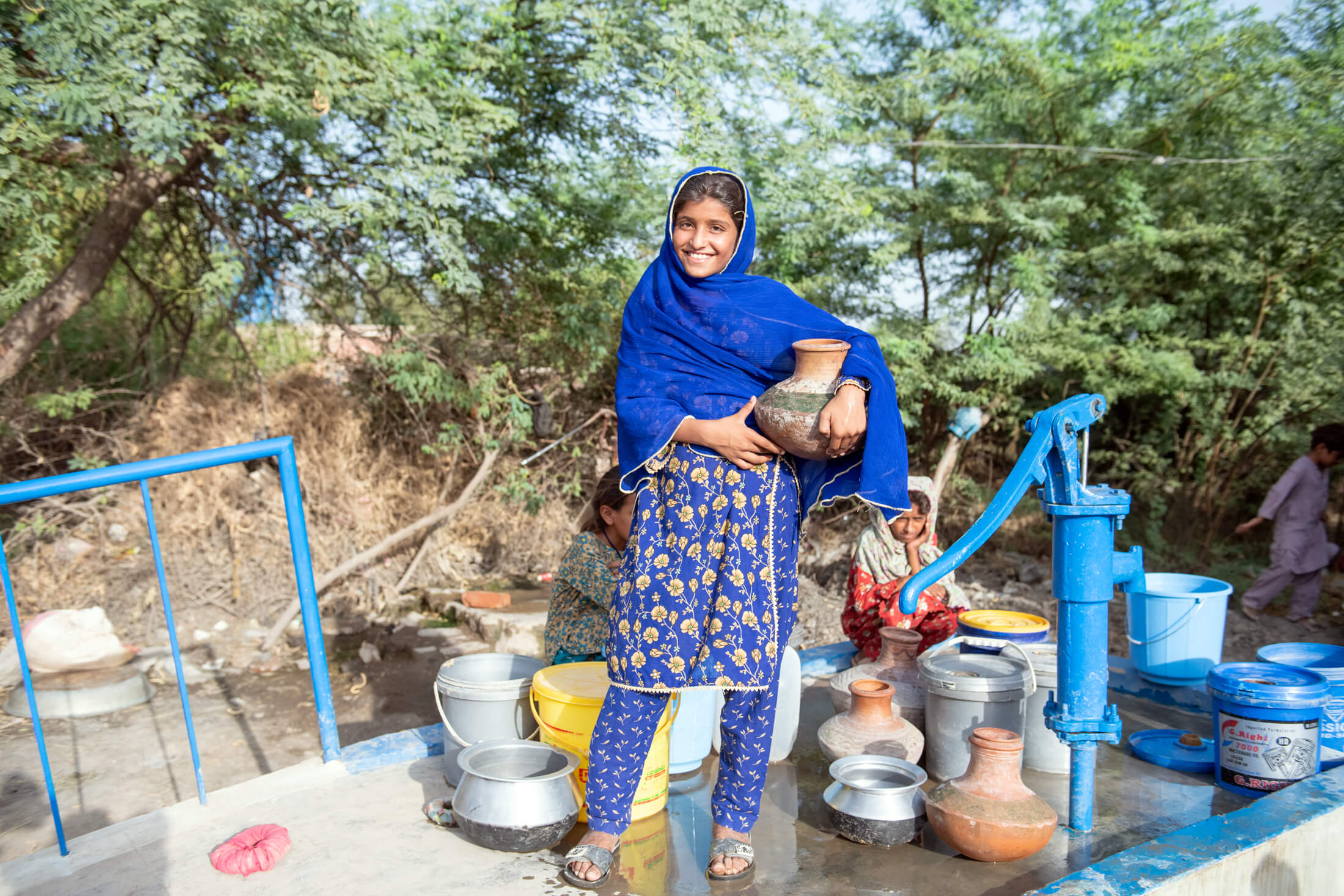
A young girl collects clean water from a hand pump installed by an International Medical Corps WASH team in the district of Shaheed Benazirabad, Pakistan.
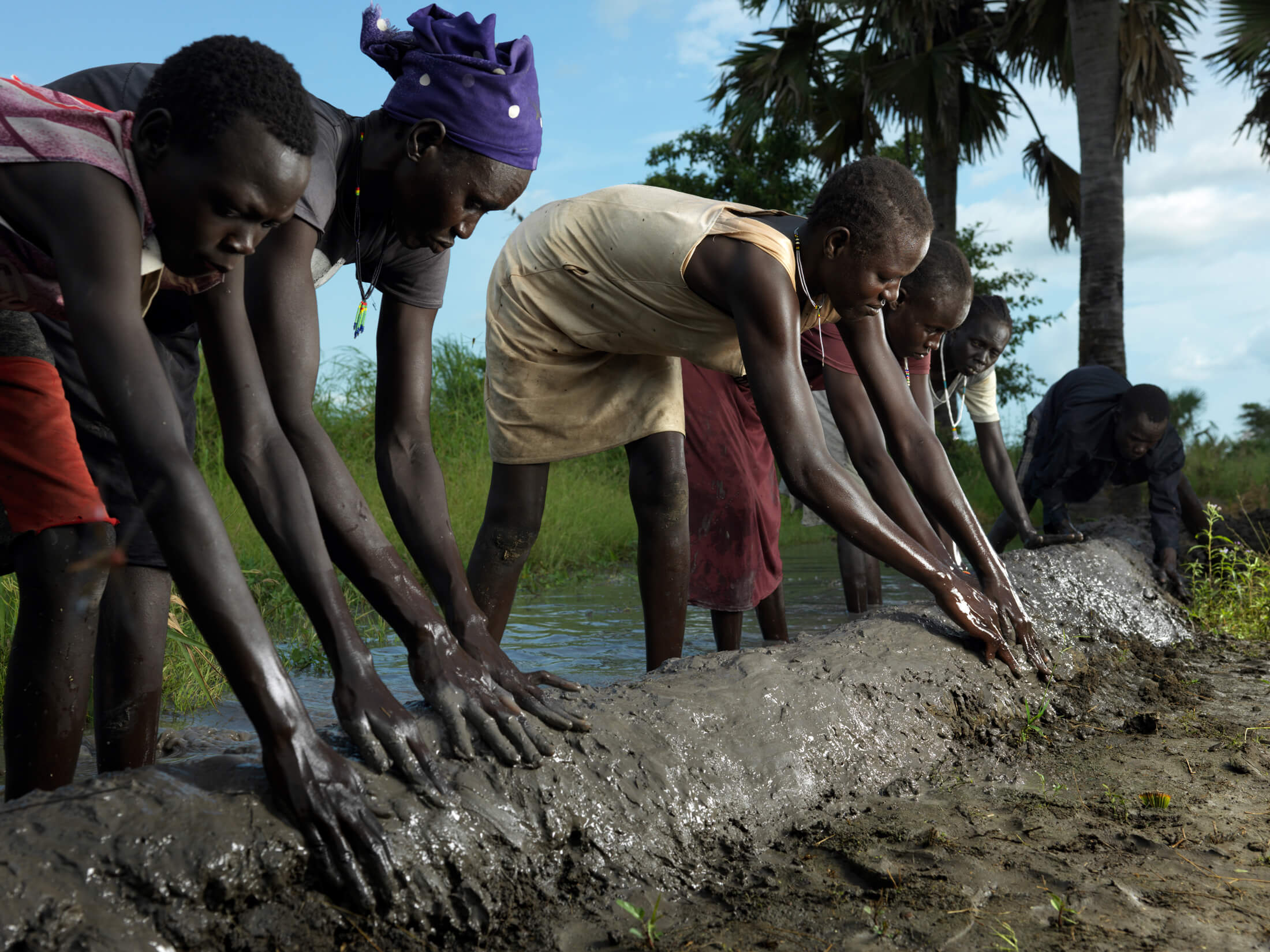
Residents of Dolieb village work to build up the nearby dike to prevent more damage, as floodwater rises behind them. Since September 2024, flooding in South Sudan has affected some 1.4 million people and forcibly displaced more than 379,000. International Medical Corps deployed an emergency-response team to flood-affected villages in Panyikang County, where we provided such medical services as nutrition screening, medical consultations and essential medications.
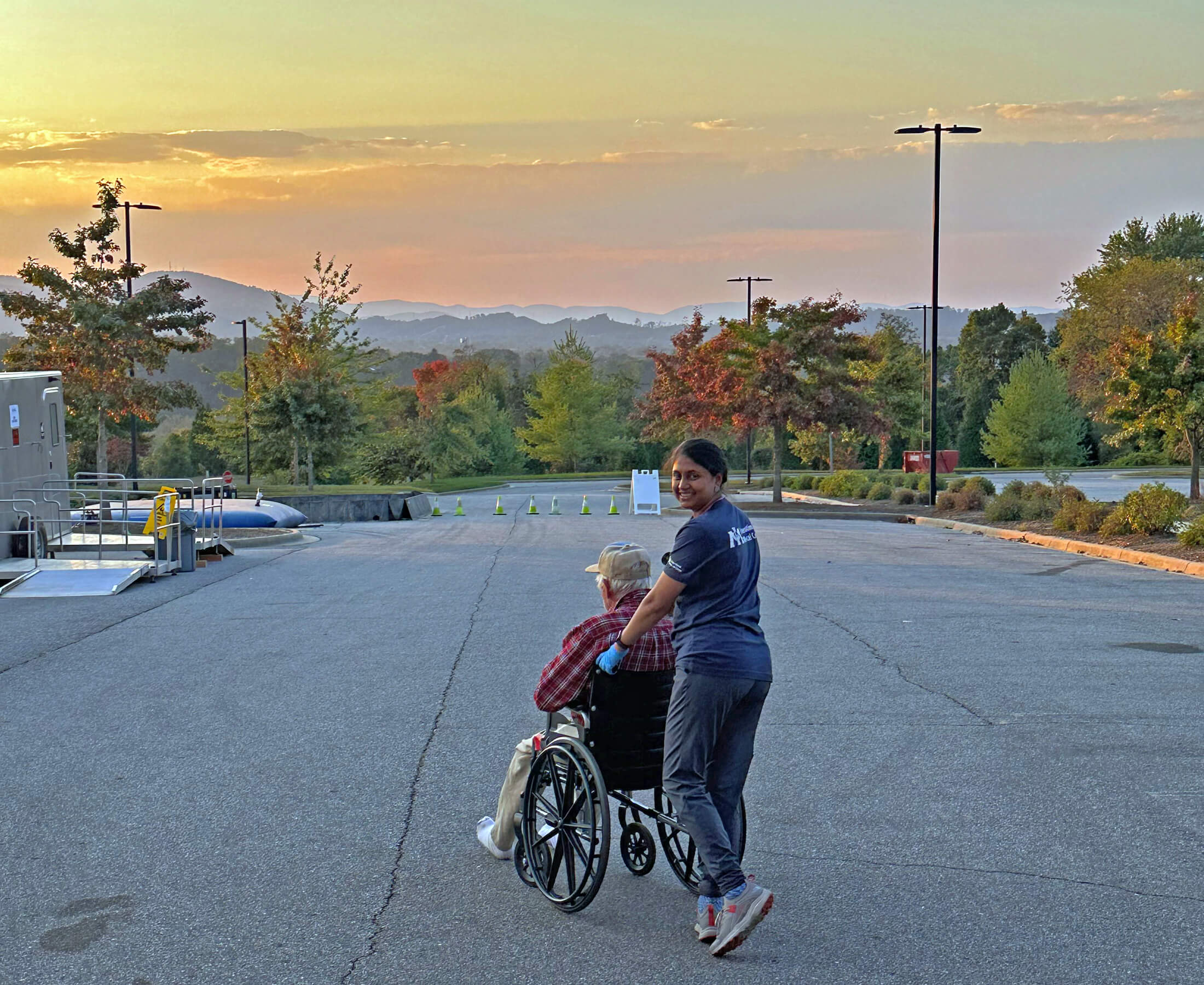
In the wake of Hurricane Helene, which devastated western North Carolina, International Medical Corps Nurse Shiv Kumarie brings a displaced Asheville resident sheltering at a local shelter to use the outdoor bathroom facilities.
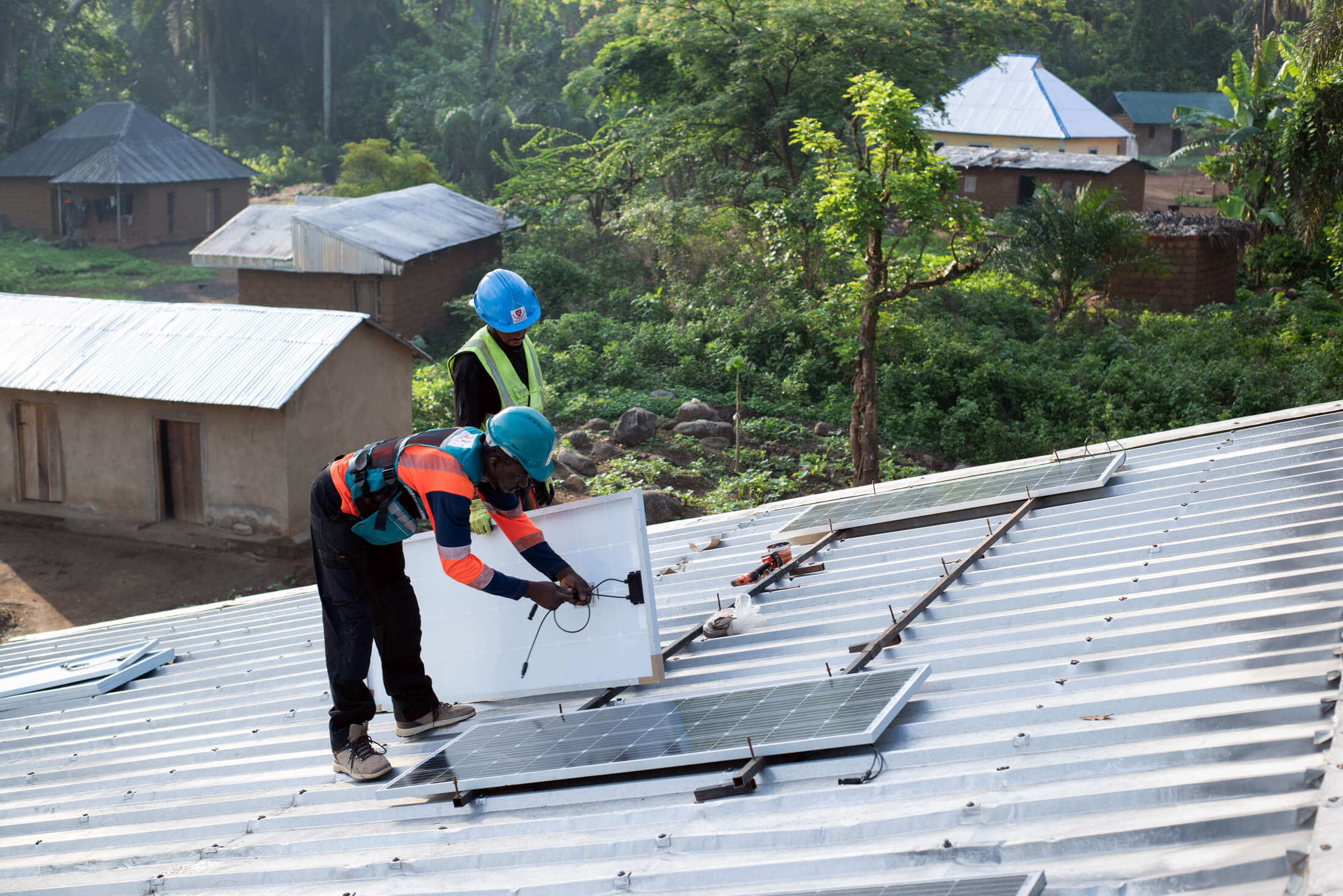
Technicians install a solar power system on the roof of Akwaja Health Center, a clinic run by International Medical Corps staff in northwest Cameroon. Solar power is just one way we’re helping healthcare systems ensure continuity of care in the face of extreme weather.
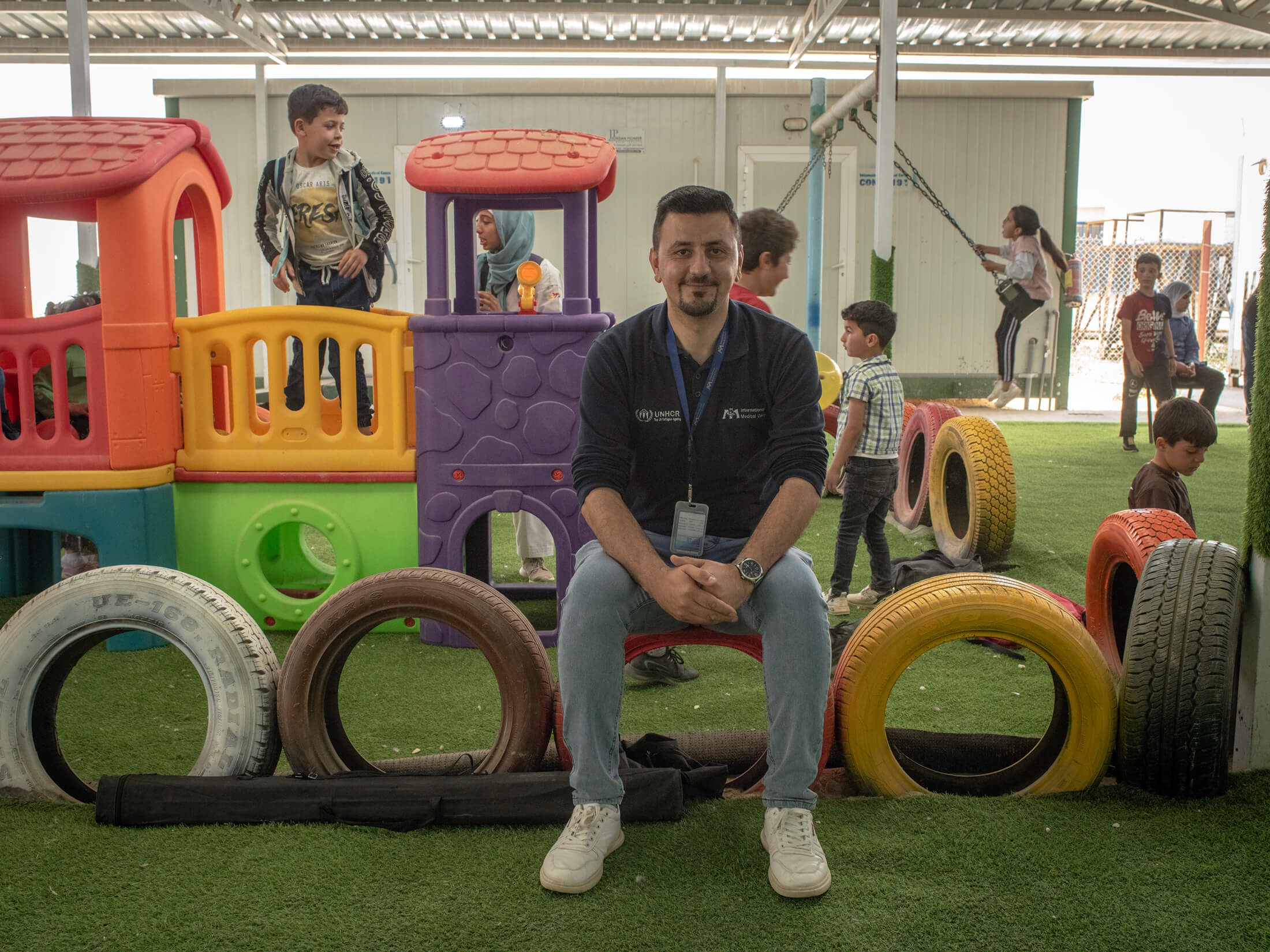
An International Medical Corps staff member sits at a playground in Zaatari Refugee Camp, which is host to the world’s largest population of Syrian refugees. The children playing in the background are part of the “Be My Friend” programme, which aims to prevent bullying and increase social connection in vulnerable communities. For the past decade, International Medical Corps has been on the ground providing comprehensive health and mental health services to Syrian refugees in Jordan.
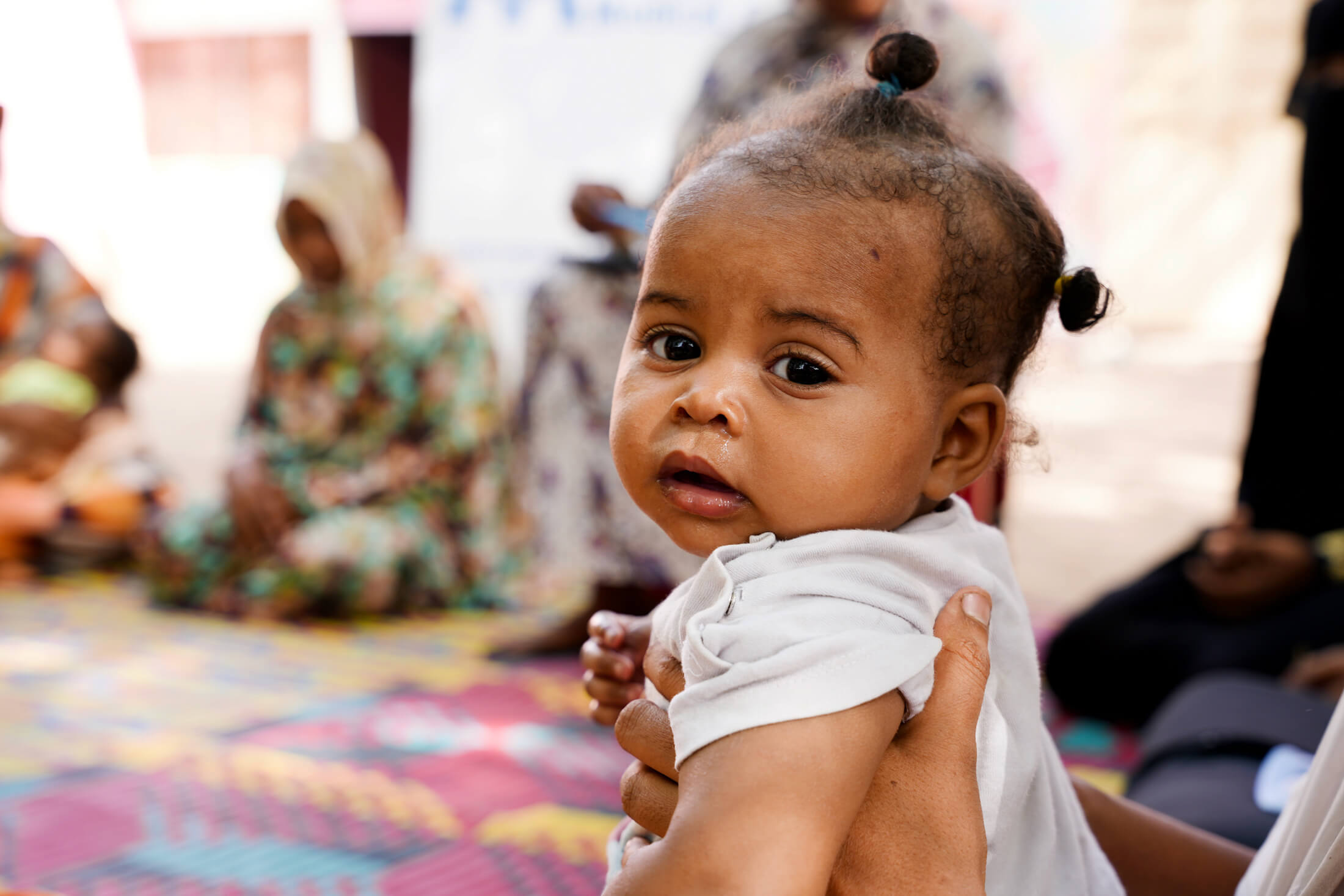
Radia gives a curious glance to the camera while her mother, Afara, attends a mother-to-mother support group, which shares best practices in breastfeeding and complementary feeding. Support groups like this one in Singa, Sudan are led by International Medical Corps nutrition officers, who work to support communities facing immense challenges like malnutrition and infectious disease in the midst of conflict.
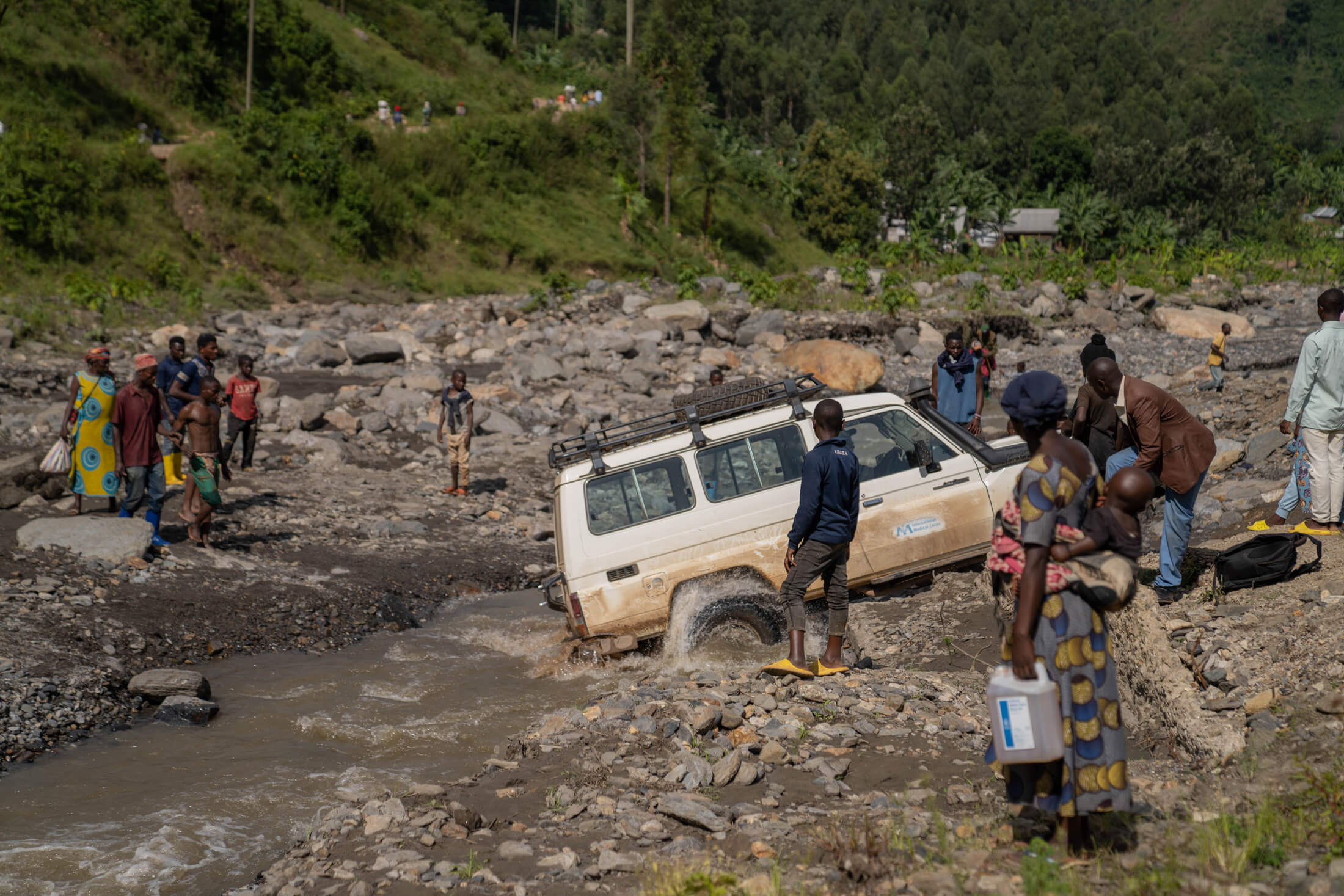
In the hills of South Kivu, along the eastern edge of the Democratic Republic of the Congo, local community members help an International Medical Corps team push a mobile medical unit across a rocky river, helping our team continue their journey and provide medical services for families displaced from their homes due to violent conflict in the region.
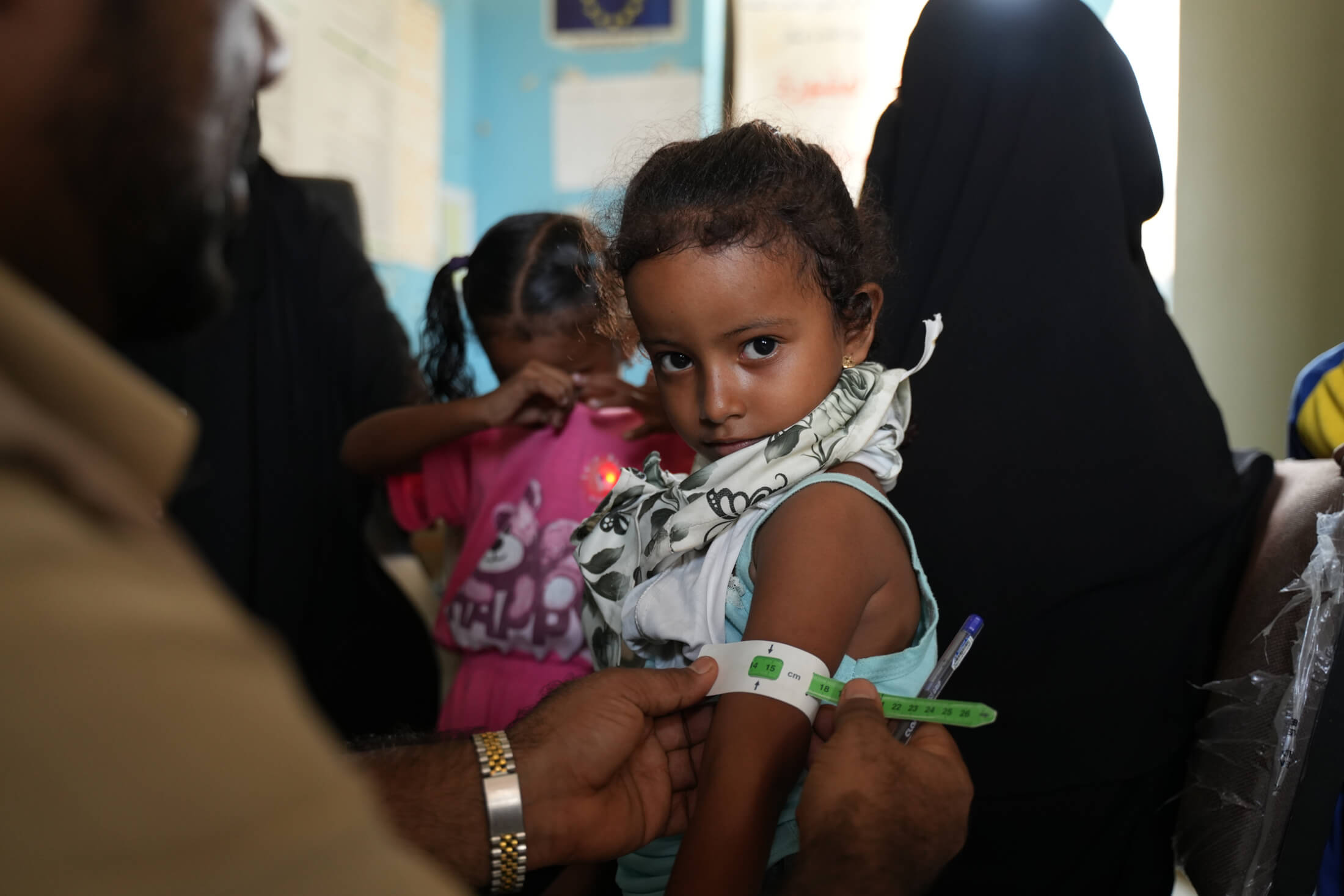
An International Medical Corps health and nutrition assistant measures 2-year old Ateekah’s mid-upper arm circumference to check her nutritional status. At the Gold Madram Health Unit in Al Musaimeer District, Yemen, we provide a range of nutrition and health programming for local residents.
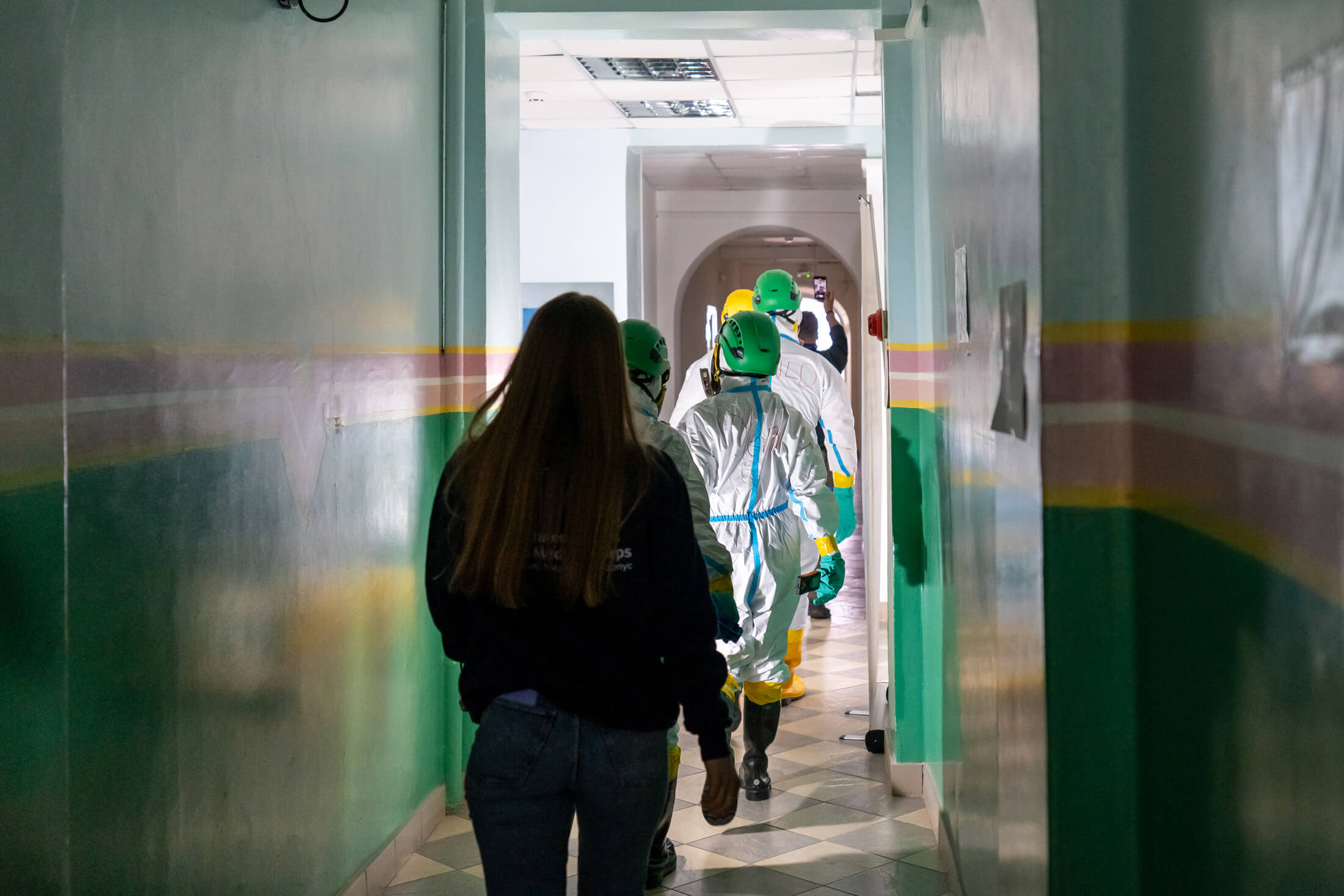
Emergency-care providers in Ukraine take part in a chemical, biological, radiological, nuclear and explosives training simulation to test their skills in a country where the number of trauma patients continues to grow as air strikes cause explosions and destruction that harm civilians. To help frontline healthcare workers refresh their knowledge and learn the latest techniques for responding to such emergencies, International Medical Corps ran a seven-part emergency and trauma-care training programme in partnership with the Harvard Humanitarian Initiative that reached thousands of providers.
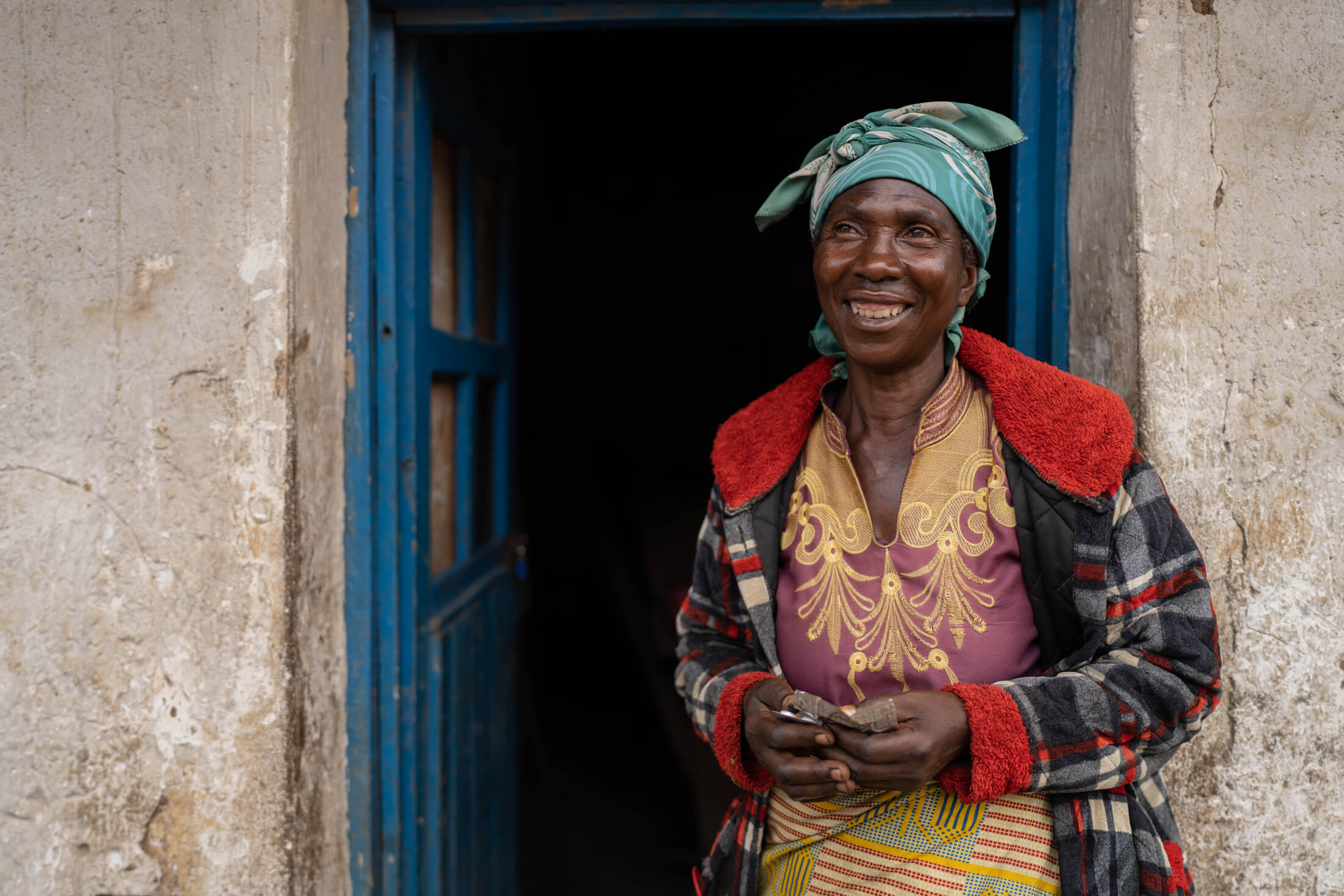
Ciza, a 56-year-old widow, shares a shy smile after receiving medicine at a mobile medical unit run by International Medical Corps at the Matendo site for internally displaced people in the Democratic Republic of the Congo.
Though we don’t know where or when the next disaster will be, as we move forward into a new year, we do know that, together, we can rise to whatever challenges we face, and continue to be a force of health and hope for those who need it most. Please join us in helping people in need around the world.
